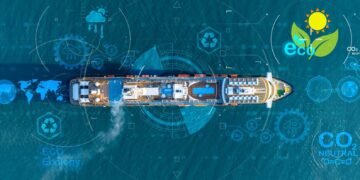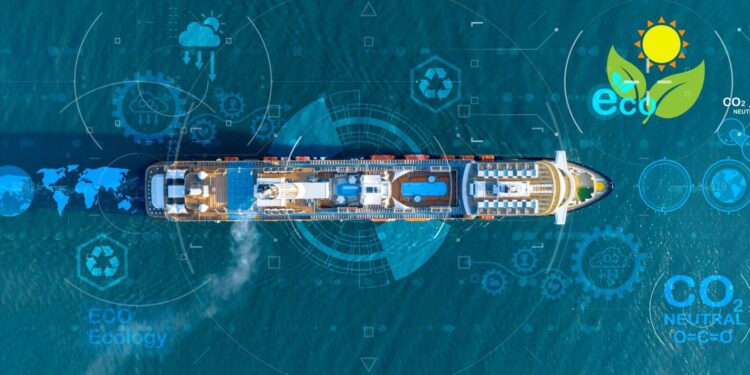Onboard Carbon Capture and Storage (OCCS) technology can eliminate emissions by over 100%, achieving reductions of up to 121% when paired with biofuels.
The challenge arises from the fact that ships already achieve a 100% reduction in emissions. These vessels utilize biofuels derived from plant or animal sources, rather than oil or natural gas.
As plants grow, they absorb carbon dioxide (CO2) from the atmosphere, but burning biofuels in ship engines releases CO2 back into the air. However, with the innovative OCCS technology, ships can capture and store this CO2 before it escapes, resulting in a net removal of carbon dioxide and contributing to pollution reduction and climate protection.
The OCCS system deployed on ships captures CO2 generated by engine combustion, temporarily storing it for secure transport and future storage or use. This technology primarily utilizes monoethanolamine (MEA), which effectively “traps” CO2 from exhaust emissions before they are released into the environment.
A recent study by the Global Centre for Maritime Decarbonisation (GCMD) indicates that onboard carbon capture can cut greenhouse gas emissions by as much as 29%, and when used with biofuels, reductions can reach the remarkable level of 121%.
The COLOSSUS project, focusing on OCCS implementation in medium-sized tankers, highlights the potential of this technology, particularly with MEA, to significantly aid in compliance with the International Maritime Organization’s (IMO) GHG Fuel Intensity (GFI) targets set for 2040. The analysis encompasses the entire carbon value chain, from fuel production and transport to ship operations and the ultimate storage or utilization of captured CO2, noting that CO2 transport and storage contributes less than 1% to overall emissions.
Combination Strategies
Ships operating on Heavy Fuel Oil (HFO) combined with the OCCS system can stay within GFI intensity limits until 2032 without needing a fuel switch. Vessels using LNG can maintain compliance until 2035.
When OCCS is paired with bio-LNG or biodiesel from used cooking oils (UCO), it can meet 2040 targets while achieving substantial emissions reductions. Utilizing captured CO2 to produce renewable methanol allows these vessels to claim an additional 17% reduction in greenhouse gas emissions.
Despite these significant environmental advantages, OCCS faces challenges. The cost for capturing a tonne of CO2 ranges from $269 to $405, based on a 40% capture rate and complete waste heat recovery. Lynn Loo, CEO of GCMD, stated, “We hope this study will establish a realistic regulatory framework for OCCS, enabling policymakers to make informed choices about the shipping industry’s future.” The IMO is already working on a regulatory framework for OCCS, targeting completion by 2028. This framework will include specifications for safely capturing, transporting, and storing CO2 from ships in dedicated onshore facilities.
The study illustrates that OCCS technology can aid vessels in meeting 2032, 2035, and 2040 targets, contingent on fuel type and CO2 capture efficiency. It details the process of capturing CO2 from ship exhaust, safely storing it onboard, and transporting it to certified reception or storage sites. COLOSSUS (Carbon capture, offloading, onshore storage, utilization, and permanent storage) provides a comprehensive life cycle assessment, offering the maritime industry a thorough evaluation of OCCS’s emission reduction potential across the carbon value chain.
Yet, despite the shipping industry’s capacity to aid in the decarbonization effort, several challenges persist within the OCCS sector. An October analysis by GCMD and partners highlighted barriers such as recurring costs linked to fuel penalties, solvent replenishment, labor, maintenance, and offloading services. Additionally, the emerging field of captured CO2 offloading faces hurdles due to the absence of clear national and port regulations for monitoring and managing its final disposal. The global shipping industry aims to achieve zero carbon emissions by 2050, and OCCS technology is positioning itself as a crucial partner in this transition, providing a realistic, technologically sound, and environmentally beneficial solution.

















